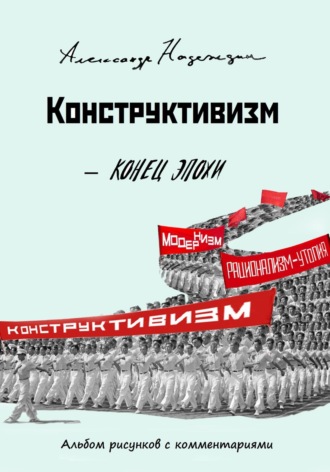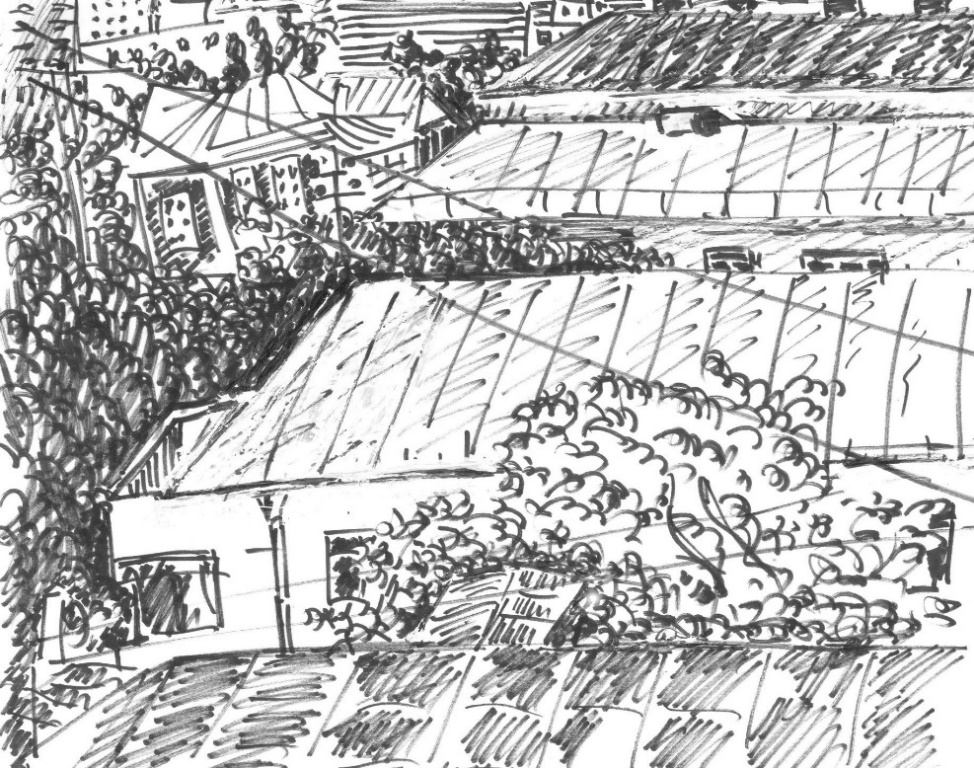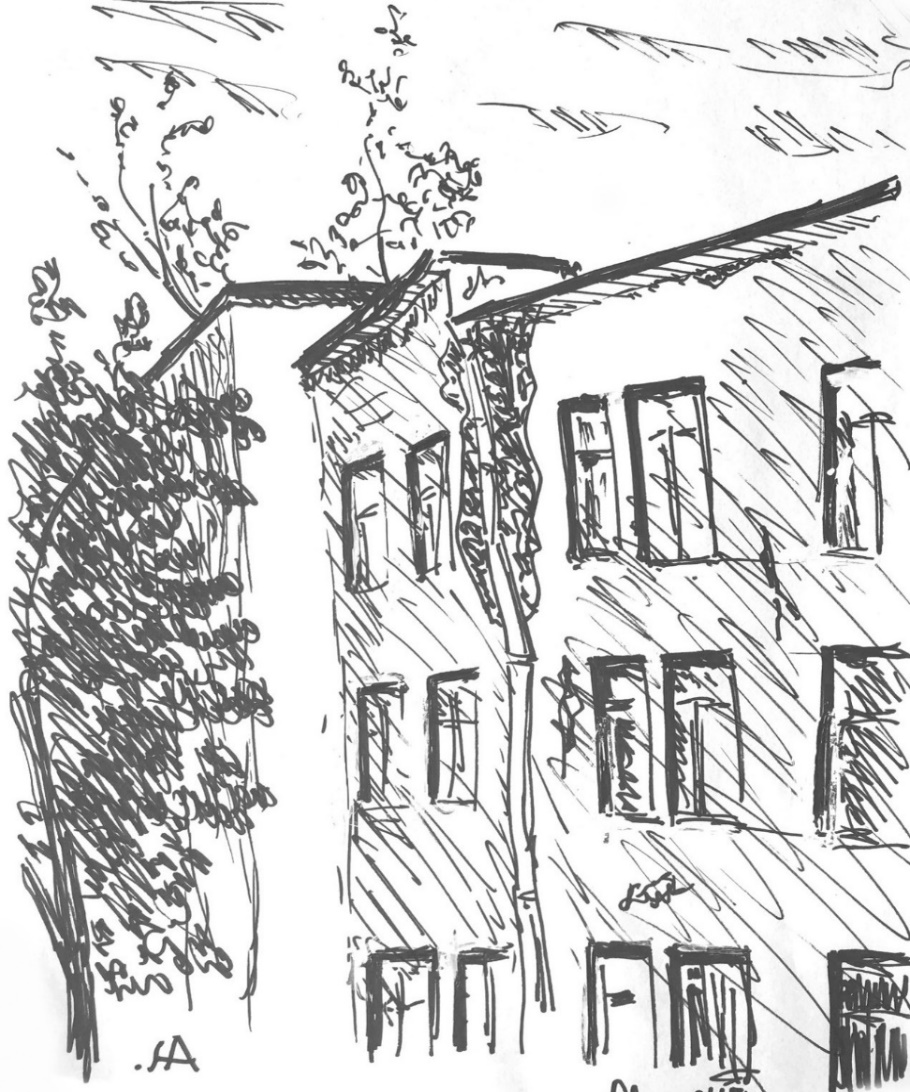
Конец эпохи

Классика в её наиболее помпезном выражении победила в СССР, когда идея управлять людьми с помощью создания нового коллективистского и морально безупречного быта оказалась откровенно утопической и была заменена старой, как мир, идеей репрессий против подозреваемых в нелояльности слуг режима, запугивания населения физической расправой или отъёма средств к существованию и возвеличивания мегало маньяков вождей. Таким образом жилые и административные здания последнего десятилетия перед войной, и еще какое-то время после неё (до XX съезда КПСС) в Москве, в столицах союзных республик и некоторых стран народной демократии, несут на себе печать сталинского стиля со шпилями, колоннами, скульптурами и пирамидальным профилем.
Снова повторю, что ни конструктивизм, ни вытеснивший его сталинский ампир, не были достаточно приспособлены да, впрочем, никогда и не предназначались для массового расселения рабочего класса, таким образом методы строительства и вкусы архитекторов были использованы для размещения более полезного режиму слоя советских служащих и преданных власти представителей творческой интеллигенции. Судя по всему, их потомки до сих пор обитают в домах, заполнивших центр Москвы взамен сгоревших или снесенных одноэтажных кварталов мещанских домов, оставшихся от предшествующих исторических периодов. С той лишь поправкой, что всей этой массы домов не хватило для экспоненциально растущей массы слуг режима, в том числе неисчислимых военных, включая преподавателей и курсантов военных училищ. То есть, за редким исключением к концу 50-х весь жилой фонд центра Москвы состоял из коммунальных квартир (вот когда осуществилась мечта идеологов коммунистического быта!). Не знаю как Вы, но переехав в западный мир в самом конце 70-х я заметил, что упоминание многосемейных коммунальных квартир в разговоре с местными, часто требовало объяснения этого экзотического феномена.
Classicism in its most pompous expression won in the USSR, when the idea of controlling people by creating a new collectivist and morally impeccable way of life turned out to be flat utopian and was replaced by the world-old idea of reprisals against suspected of disloyalty servants of the regime, intimidation of the population by physical violence or deprivation of livelihood and exaltation of megalo-maniac leaders. Thus, residential and administrative buildings of the last decade before the second world war, and for some time after it (before the XX Congress of the CPSU) in Moscow, in the capitals of the Union Republics and some “countries of people's democracy”, bear the stamp of Stalin's style with spiers, columns, sculpture, and pyramidal profile.
I repeat that neither constructivism, nor the Stalinist Empire style that replaced it, were sufficiently adapted to and, most likely, were never intended for the mass settlement of the working class, so the construction methods and tastes of architects were adopted for accommodating of a more useful to the regime layer of soviet administrators and representatives of the creative intelligentsia devoted to the governing power. Apparently, their descendants still live in the houses that filled the center of Moscow instead of the burned-out or demolished one-story quarters of petty-bourgeois houses left over from the previous historical periods. With the only amendment that all this mass of houses was not enough for the exponentially growing number of the regime servants, including innumerable military men such as teachers and cadets of the military schools. That is, with rare exceptions, by the end of the 50s, the entire housing stock of the Moscow center consisted of communal apartments (making the dream of the communist lifestyle ideologists came true!). I don't know about you but having moved to the Western world in the very late 70s, I noticed that the mention of the multi-family communal apartments in a conversation with the locals often required an explanation for this exotic phenomenon.
***
Конструктивизм не прошел бесследно в истории и практике архитектуры. Круглые и гранёные многоэтажные эркеры встречаются на фасадах домов в центре Москвы безо всяких претензий на уникальность здания, а просто как один из приемов жилищного строительства. Даже в монстрообразных офисных зданиях 90-тых появляются некоторые детали конструктивистских фантазий творцов авангарда, но в этом случае их применение, как правило, входит в противоречие с псевдо-классикой и даже откровенной лубковой пошлостью «блатных» архитекторов, поставивших своей целью поразить падкого до ярких цацок дикаря-заказчика2. Тем или иным путем открытия художников авангарда первой половины 20-го века нашли и находят свое применение в повседневной практике строительства и художественного оформления современной жизни. Очищенные от идеологических наслоений уходящей эпохи рационального управления обществом, конструктивизм в архитектуре и его родной дядя – конструктивизм в изобразительном искусстве, превратились в легитимные составляющие современной культуры, независимо от того, «какое, милые, у нас тысячелетье на дворе?»3
Constructivism has not gone unnoticed in the history and practice of architecture. The round and faceted multi-story bay windows are found on the facades of houses in the center of Moscow without any claims to the uniqueness of the building, but simply as one of the methods of housing construction. Even in the monster-shaped office buildings of the 1990-s appear some details of the constructivist fantasies of the avant-garde creators, but their use, as a rule, conflicted with pseudo-classics and even outright popular vulgarity of “court” architects, who were striving to impress the savage customer, greedy for bright trinkets. In one way or another, the discoveries of the avant-garde artists of the first half of the 20th century found and find their application in the everyday practice of building and decorating modern life. Purified from the ideological layers of the outgoing era of the rational management of society, constructivism in architecture and related constructivism in visual arts have become legitimate components of modern culture, regardless of “which millennium, my dears, is there outside?”

Примечания
1
Всем теперь известный проект памятника-дворца 3-го Интернационала
Well known monument to the third International
2
Бывший мэр Москвы, поощрявший строительство домов-уродов
Former mayor of Moscow who encouraged construction of odd buildings
3
Борис Пастернак Boris Pasternak





